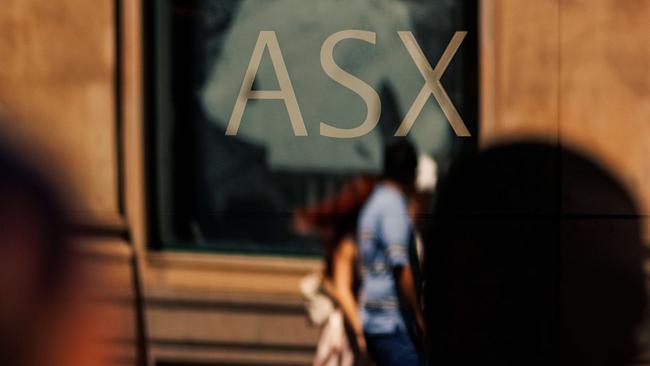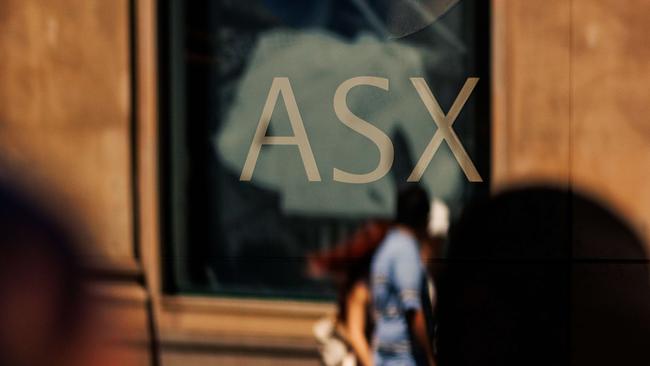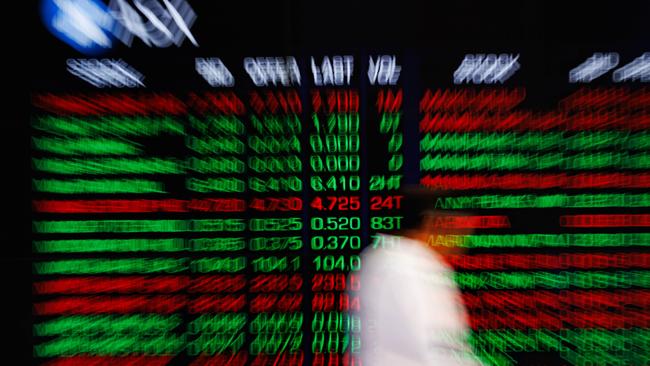‘Too early to call the bottom’: ASX could fall further on Trump tariffs
The Australian sharemarket market will likely remain volatile even after the ASX saw a $116bn rise in one day.

Business Breaking News
Don't miss out on the headlines from Business Breaking News. Followed categories will be added to My News.
The Australian sharemarket has likely not hit rock bottom, despite markets surging late last week, an industry expert has warned.
Share markets had a roller coaster ride over the past week, plunging on the back of ongoing worries about US President Donald Trump’s tariffs before rebounding when Mr Trump delayed some of the tariffs for 90 days on April 9.

But AMP chief economist Shane Oliver warned it’s unlikely the worst is over for investors.
“The good news is that Trump clearly has a pain threshold and that share and bond markets are still able to impose some constraints around his policies,” he said.
“However, it’s way too early to say that we have seen the low in shares, as there is a long way to go with the tariff battle. Stress is continuing to build in US asset markets and much damage has already been done to the growth profit outlook.”
Global sharemarkets have been volatile over the last few weeks on the back of Mr Trump’s tariff policy.
While he initially announced individual tariffs on 75 countries, Mr Trump walked them back on fears of a US recession.
But Mr Trump has kept in place a 145 per cent against Chinese imports.
In what has become a tit-for-tat trade war, China has added its own tariffs, which now sit at 125 per cent, on US imports.
Zenith Investment Partners head of asset allocation Damien Hennessy said it was the equivalent of a $700bn tax shock, equivalent to roughly 2.6 per cent of household incomes.
“Inflation is the first casualty, with core inflation expected to rise from 2.2 per cent to above 4 per cent, well beyond the US Federal Reserve’s 2 per cent target,” he said.
“Growth projections are equally sobering: U.S. GDP could lose up to 1.5 percentage points, potentially dragging growth close to zero and flirting with recession.”
Dr Oliver said in previous recessions, including the global financial crisis, it was common for share markets to have downturns and large bounces close together, before ultimately trading lower over time. The key is to watch any reset of the lows.

On a sea-sawing week, the ASX did just this, by plummeting on Monday and Tuesday, before bouncing sharply later in the week.
A relief rally on Thursday off the back of Donald Trump’s decision to pull back on a global trade war, saw the ASX add around $116bn.
Ultimately the ASX 200 lost 0.28 per cent over the week.
Dr Oliver said the markets rallied after Mr Trump “blinked” and reversed his course, with experts saying the US was on a crash course for a recession.
“The reality of course is that Trump was getting nervous as shares were on the brink of a bear market, which headlines would blame on him, and most importantly the US bond market was - and still is - showing increasing stress with a sharp back up in bond yields,” he said.
American Century Investments’ chief investment officer Richard Weiss said this volatility is standard and investors should focus on their long-term goals.
“Markets can change quickly for several reasons and it’s important to be comfortable with your plan and your emotions in the face of uncertainty,” he said.
Mr Weiss also warned about speculating when the worst is over.
“Strong markets can often drive investors to speculate, or make risky purchases in anticipation of market peaks and higher returns,” he said.
“They take chances in the hope that the market will continue to go up — and may not have a plan if it doesn’t. This is captured by the phrase “fear of missing out,” or FOMO.
“Speculation, or buying something just because it goes up and you’re afraid of missing out, rarely pays off.”
Originally published as ‘Too early to call the bottom’: ASX could fall further on Trump tariffs


